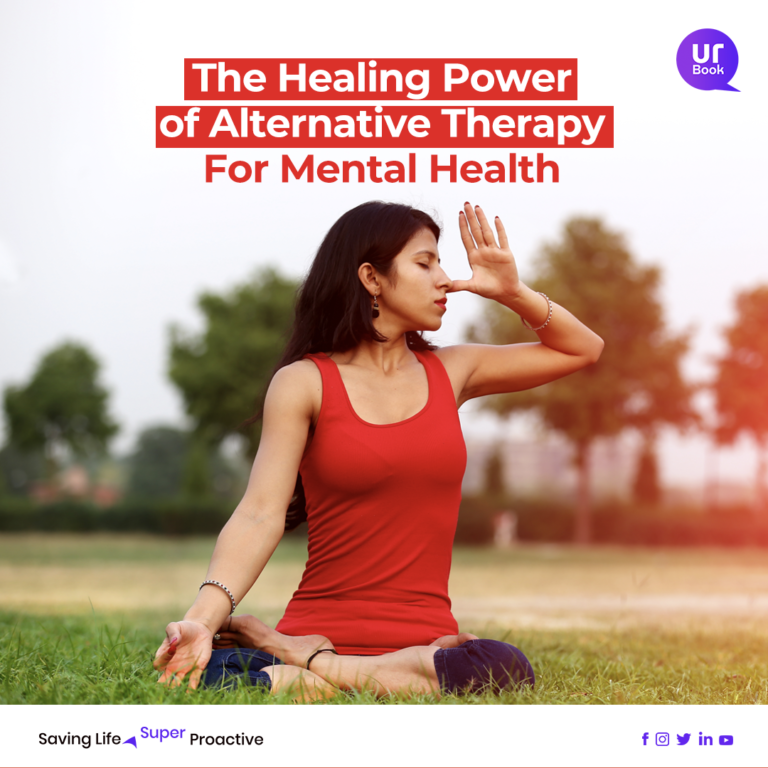
The Healing Power of Alternative Therapy For Mental Health
The path to mental health recovery and wellbeing is diverse. While there’s no substitute for medication and traditional therapy in alleviating issues, a growing body of evidence suggests that alternative therapy is extremely helpful.
What is alternative therapy?
Around the world, about 5% of adults suffer from depression. In India, 1 in 7 people have a mental disorder. Yet, most of these people don’t have access to help. A mere 29% of people with psychosis and 1/3rd of people with depression receive formal mental health care.
Those who do get medication often complain of the devastating side effects. It is why the world is turning towards complementary treatments, such as music and art therapy.
Called alternative therapies, or complementary or integrative therapies, they encompass a wide range of non-conventional approaches to mental well-being. From acupuncture to aromatherapy, from yoga to crystal healing, from movement therapy to hypnotherapy, there are many types of alternative therapy. They are frequently used alongside or in conjunction with conventional medical treatments.
Why does alternative therapy work?
Broken. Lost. Traumatised. Grief-stricken. Mental health issues evoke a spectrum of emotions. Alternative therapy gives people the opportunity to express themselves in safety, peace, and comfort. Be it music or animals, the therapy acts as a medium for processing and regulating emotions.
Moreover, most people find communicating their thoughts and feelings through traditional therapy challenging. Alternative therapies make it easier because they engage a person at multiple levels. Another reason alternative therapies work is because they amplify the therapeutic effect of traditional treatment.
Harmony in healing: The effect of alternative therapies on mental health
There are many alternative therapies. Each has a different effect on mental health.
For instance, animals are often used for psychotherapy. Taking care of horses and riding them has been shown to improve both behaviour and emotions in people. A reason it works is because horses are sensitive and attentive to human emotions.
Another example is yoga. Recommended for people with PTSD, depression, and schizophrenia, the breath work and poses help focus the mind. Plus, it is physically safe to practise for most people.
Since creative art therapies are the most popular, we focus on them today.
Music alternative therapy: in tune with wellness
This structured form of therapy uses music to address physical, emotional, cognitive, and social needs. Individuals create and share musical experiences with trained music therapists. Music works in a number of ways to heal mental health:
- The beat and rhythm ease muscle tension and can slow down the heartbeat by syncing it to the song.
- Creating music or just dancing to it soothes the nerves, creating a calming effect and reducing stress and anxiety.
- It allows self-expression, revealing thoughts, and emotions that are hard to put into words. This is particularly beneficial for those dealing with trauma or emotional disorders.
Music therapy also improves cognitive function, aiding in memory recall and attention improvement, which makes it helpful in dementia. It is also effective for people with chronic pain, as music is known to lessen your perception of pain.
Dance therapy: the power of movement
A branch of music therapy, dance uses movement to better mental wellbeing. This alternative therapy is frequently used with cancer because it improves self-esteem and reduces pain, tension, and depression. On top of that, dance doubles as exercise, adding physical benefits like blood circulation, better breathing, and stronger muscles.
Art therapy: sculpting resilience
Art therapy utilises the process of making drawings, paintings, sculptures, and more to improve mental health. It pushes people to explore their inner feelings, promoting self-awareness. Experience or artistic skill is not necessary here, as the goal is to express yourself.
This type of alternative therapy is used as a complementary treatment for numerous disorders:
- Dementias
- Depression
- Schizophrenia
- Alzheimer’s disease
- Cognitive impairment
Art therapy is not limited to painting; it includes other media too, like drawing, drama, writing, and sculpting. All of these help vent negative emotions like fear and anxiety, which improve mood.
Besides evoking happiness, art therapy also gives people a sense of agency. They gain a sense of control because they decide the direction in which the creative process goes. Since trauma, diseases, and mental conditions snatch away control, this empowerment can have a positive and lasting effect, particularly for cancer patients, as a number of studies show
Alternate therapies: painting a brighter future
Alternative therapy cannot replace conventional treatment for mental health or related diseases. That said, there is compelling evidence that music, yoga, art, animals, and other alternatives can certainly complement them.
They offer people a unique path to healing, having a profound effect[iii]. Reducing stress, facilitating emotional expression, improving cognitive function, and ultimately contributing to a better quality of life for those struggling with mental health conditions.
Disclaimer: Responses to alternative therapies vary. Before you try them, consult with a healthcare professional.
